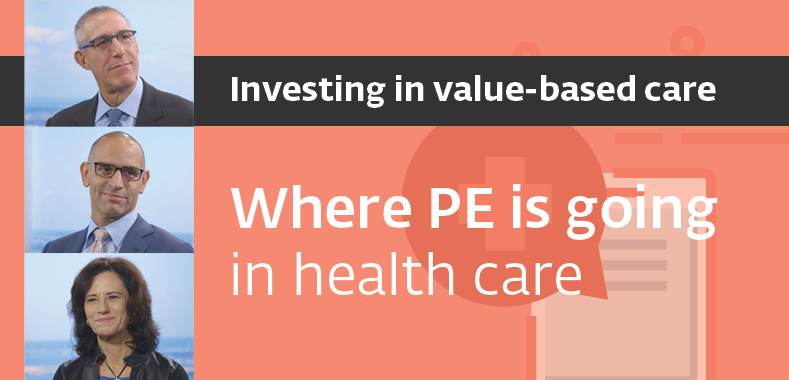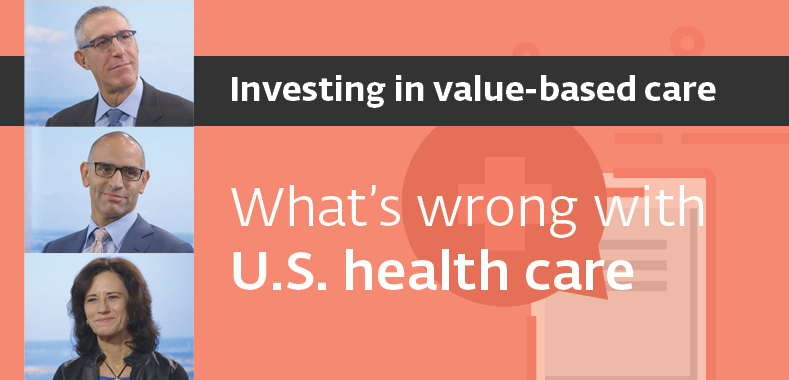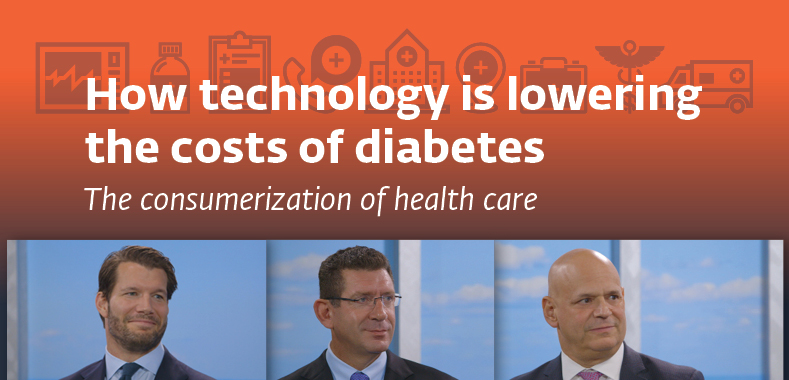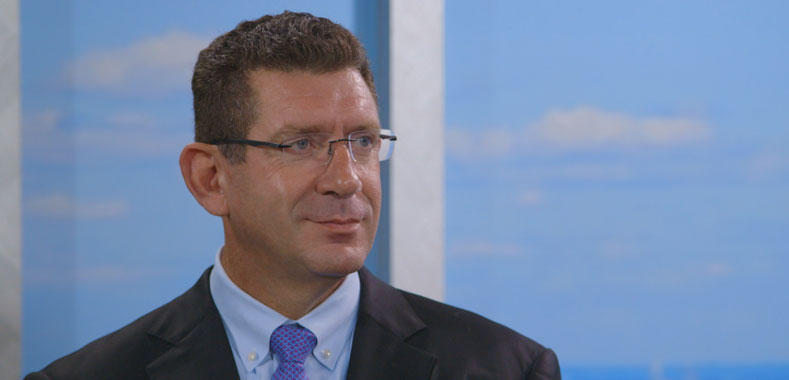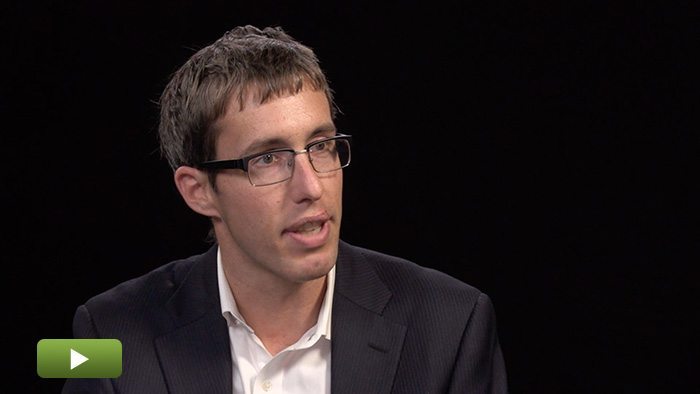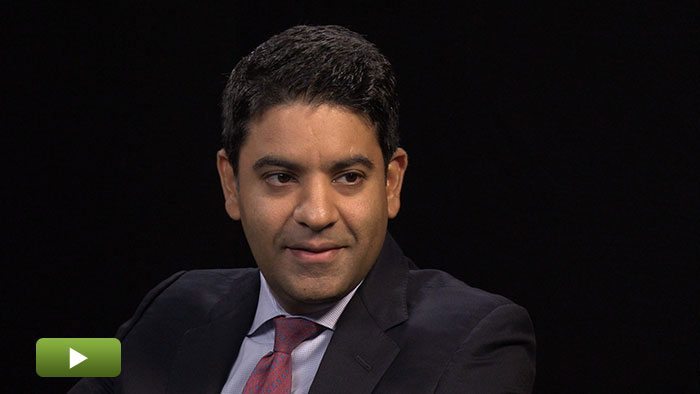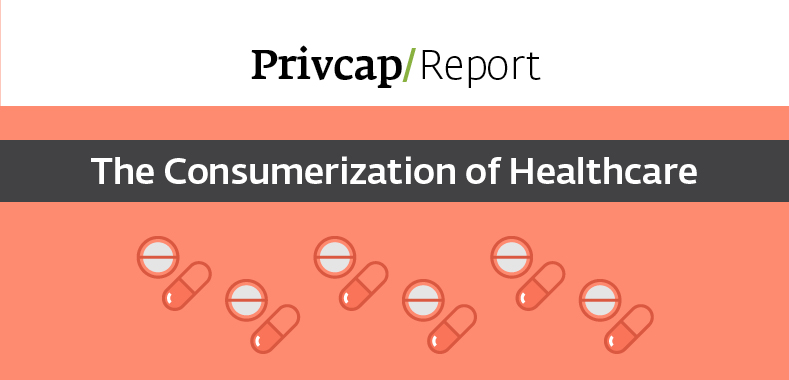Lower costs, improve outcomes
Transcript Download Transcript
Lower Costs, Improve Outcomes
David Snow, Privcap:
Today, we’re joined by Jacques Mulder of EY, Adam Blumenthal of Blue Wolf Capital Partners and Brad Coppens of One Equity Partners. Gentlemen, welcome to Privcap today. Thanks for being here.
Unison: Thank you.
Snow: We’re talking about a really exciting subject, which is the changing healthcare market. It’s moving toward much more of a “consumerized” model. What are the pressures that are pushing the businesses in that direction?
Brad Coppens, One Equity Partners:
In my mind, there’s two sides to this whole trend toward greater consumerization in the healthcare market: there’s the demand and the supply side, if you will. One has occurred, largely; one is in process or has largely not occurred. The area where you see more progression is on the consumer side. Americans who have employer-based coverage are now in these high-deductible plans.
Clearly, people have more at stake in value-based purchasing because of simple plan design. The problem, though, and getting to the other side of the equation is, when they go out into the marketplace and try to make a value-based determination of “what is good quality versus the cost that I’m spending?” The tools and the information out there is just simply not there yet.
Adam Blumenthal, Blue Wolf Capital Partners:
People have to trust healthcare providers and trust is based on a number of things, but one of them certainly is familiarity.
We’ve made a point, as we’re building urgent care centers, to really get very close to the community that we’re in. We show up at the school events, we show up at Little League games, we show up at community festivals. Our doctors do educational sessions at local church groups. We have a distinctive logo and a distinctive t-shirt and we hire to match the ethnic diversity of the communities in which we do business.
Because we are so focused on the consumer, we do immediate follow-up. When you leave our office, you get a text from us within half an hour asking how your experience was and if it’s not a good experience, you get follow-up, because we want to make it right. That kind of engagement with each individual patient [is] what builds trust and that’s what builds repeat visits.
Jacques Mulder, EY:
There’s a major shift to take the patient and put the patient really in the center of care. The patient is becoming much more of a consumer; therefore, those businesses that cater toward the provision of care outside of the four walls of a major institution and then the ability to provide care really anywhere in the world and in a form that is accessible and consumable to people in many different ways.
Healthcare no longer means that you have to get into a car, drive to a hospital where a bunch of people are gathered, and hopefully get the help you want. In many parts of the world, 25 miles is a decent walk. So, mobility, connectivity, anything that disrupts the existing care paradigm and keeps the patient connected to their physician or caregiver: I think those are critical businesses.
Snow: Why don’t you talk a bit about your investment in the home-health business and how that’s stealing pages from the playbook of consumer businesses?
Coppens: The home care, you could call it, revolution in the U.S. has a bunch of drivers, but most fundamental is a cost driver. We got invested in the home-care business largely serving Medicaid patients who want to be in the home, can be in the home and do not suffer from an acute condition, but have either a disability or are simply old and need assistance to handle activities of day-to-day living. They consume care in the home much in the same way that they would consume care in an institution, they’re just able to do so because the services have evolved.
Blumenthal: As a private equity investor, what you have to do is say, “How do you provide care that’s rational, relative to the needs of the individual?” Then, you have to say, “OK, that’s a medical question, it’s not a private equity question,” but you’ve got to start there.
What the private equity firm can do is say, “Well, let’s say that’s true. Now, how do we build the infrastructure and the interface to take that and make it accessible and allow it to access funding and allow it to live within an organizational and business structure that makes it sustainable?”
For instance, we have a home-healthcare business in Massachusetts. We’ve put together three different business lines—activities of daily living, skilled nursing and hospice—merging those into one seamless set of services able to provide support to individuals. There’s enormous value in doing that. Our insight as a private equity investor, the fact that these things grew up separately doesn’t mean that they aren’t better together.
Snow: What’s a type of business or sector within healthcare that you’re looking at very carefully and you find to be very interesting, specifically because of all these consumerized opportunities that are popping up?
Coppens: Anywhere that you can change the incentive of either consumers or physicians to act on their own behalf to lower cost or improve outcomes, I think you will do a better job. Whether that means high-deductible plans on a consumer side and really motivating consumers to act on their own behalf and seek out information that will help improve care at a lower cost, or on the provider’s side, enabling physicians who operate in an accountable care organization or operate in a capitated environment, to seek out the tools and the information that will allow them to manage a patient population in a lower-cost or more effective way.
Those types of fundamental drivers are going to be really powerful in the healthcare space. You’re seeing risk capitation is proliferating, as plans seek to move risk down the chain and as providers are consolidating and becoming more and more capable of handling their own care.
Blumenthal: We think there are two big things affecting us demographically and economically. One is, there’s a very rapidly growing aging population. The second is that advances of technology and simply economics are forcing shortened hospital stays. So, you’ve got an aging, increasingly vulnerable population and you’ve got a traditional venue of care, the hospital kicking people out earlier, to put it bluntly. That creates a problem. People basically have to be taken care of—that’s what people refer to as post-acute care. We think those two major forces mean that post-acute care has to be a lot better and a lot better coordinated, a lot more consolidated, and we’re looking at that sector quite closely.
Mulder: Working with Johns Hopkins, where we’re looking at the elimination of preventable harm. Preventable harm is the third biggest killer of people in the U.S. and it’s basically medical error or system error. They’re working one harm at a time to try and figure out why things go wrong.
It’s all focused on clinician and physician behavior, the selection of the right protocols, valuing clinical quality for those of you who are into buying hospitals or hospital systems. Clinical quality itself has tremendous value and we don’t treat it the way we treat our balance sheets. I’m on a very hard push to measure and try to compare clinical quality between institutions, so we can start answering that question of who does a better care than the other one?




